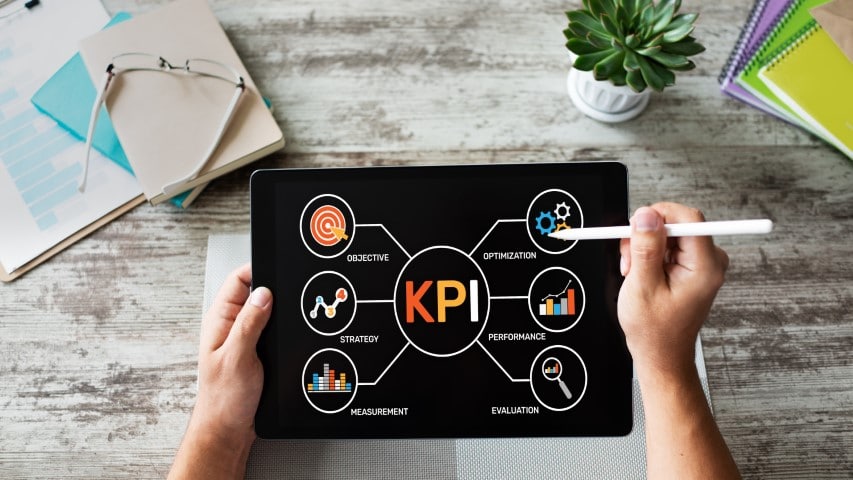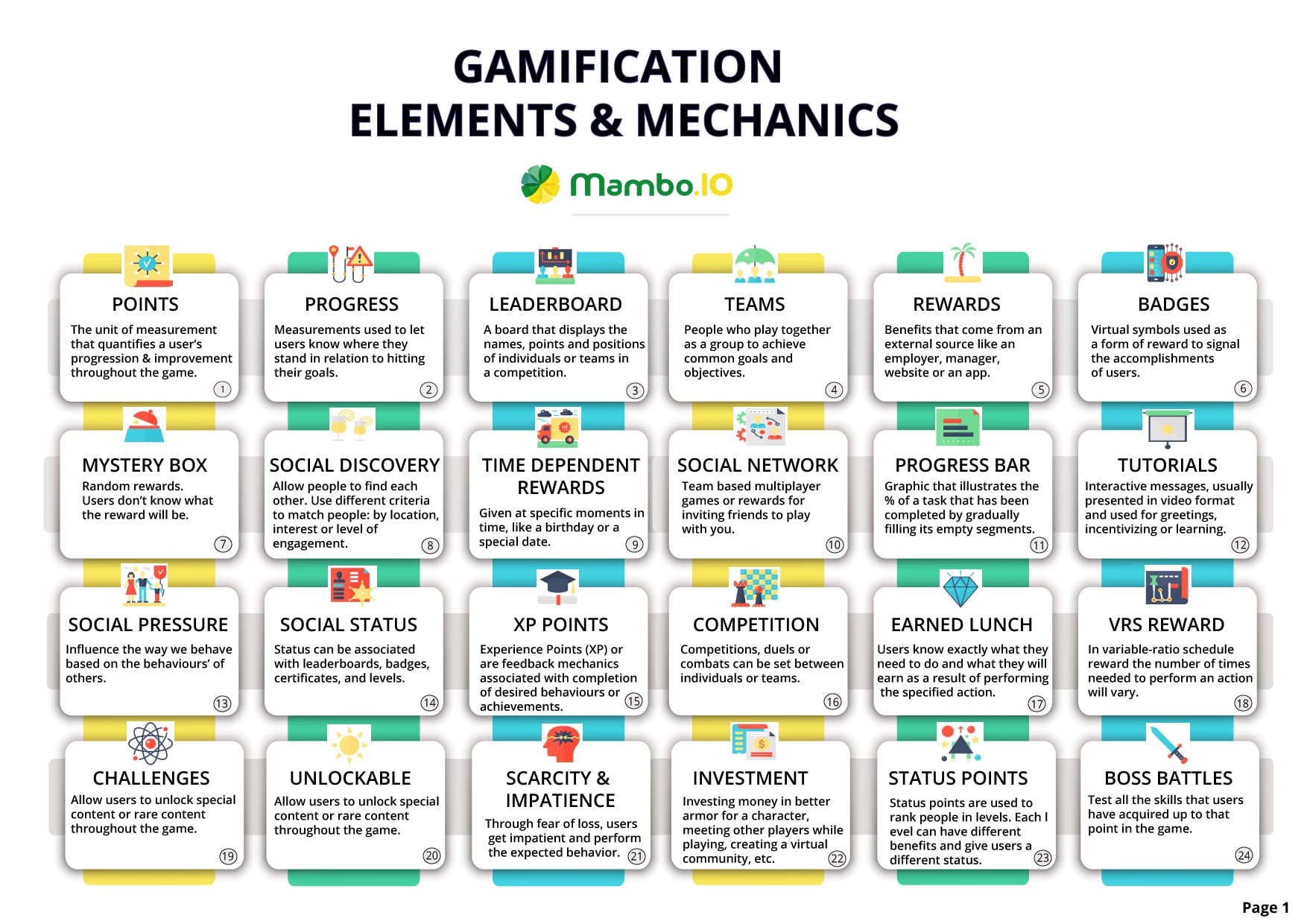Beginner’s Guide to Gamification in Contact Centers
D
Demystifying Gamification in Contact Centers.
Demystifying Gamification in Contact Centers.
Gamification in contact centers is the buzzword of the decade, and for good reason.
It’s one of the many ways businesses engage, reward and motivate their internal and external customers.
Today, we are introducing you to the Beginner’s Guide to Gamification in Contact Centers. In this guide, we ‘re breaking down some of the key questions you might have about gamification in contact center environments to help you make best use of this growing tech.
Table of Contents
- Demystifying Gamification in Contact Centers.
- Demystifying Gamification in Contact Centers.
- Contact Center Motivation and Engagement
- Gamification in Contact Centers
- Gamification in Contact Centers Benefits
- How to Use Gamification to Create a Culture of Recognition?
- Why Use Gamification in Contact Centers to Foster Collaboration and Friendly Competition?
- Why is a Collaborative Call Center so Important?
- How is Gamification Used to Boost Collaboration in Call Centers?
- How can Gamification in Contact Centers Provide a Safe Environment for Failing and Learning?
- How can Gamification Control Metrics and Give Performance Insights?
- How Gamification in Contact Centers Helps to Get Performance Insights?
- How Can Gamification in Contact Centers Help Users Help Themselves?
- How can Gamification Keep its Users in the Flow State?
- Machine Learning In Finance: 12 Essential Applications
- How To Create Interactive Compliance Training For Bank Employees
- How Fintech Apps Are Using Gamification To Increase User Engagement
- Top Gamification Companies for Employee & Customer Engagement
Contact Center Motivation and Engagement
What are the Challenges in Contact Centers that Impact Motivation and Engagement?
Retention is a real issue in contact centers. The mental wear and tear of repetitive tasks takes a large toll on agents. Not to mention the hefty targets and strict timelines. A growing swathe of ‘donut days’ (or zero-sale days) is a good indicator of lowered motivation and engagement.
A mix of simple, boring tasks, decreasing productivity, stagnant growth, lack-of-development, limited recognition, strict working regiments, decreased drive and overall burnout exist in every organisation. But within contact centers, these worrying signs actively cost you (and your clients) money. We’re talking about high churn, process bloat, staff turnover and missed revenue opportunities.
So, what’s the cure?
Well, in short, engagement and appreciation. They go an awful long way to addressing worrisome habits in all business environments. Call centers are no different. The happier and more switched-on your workforce, the increased likelihood that they’ll pass those traits on to your customers. In fact, the benefits might even be as high as a 20% boost in sales, according to Gallup.
Therefore, it’s vital that each contact center organisation puts emphasis on cultivating a team of experienced agents who are happy and engaged. By doing so, you’ll increase your profits through improved sales figures and high-quality customer service interactions.
Download your free
“Gamification Guide”
Get your PDF now and start transforming your approach to digital engagement!
Why is it Important to Keep Contact Center Agents Engaged and Motivated?
You may not think agent engagement plays a pivotal role in contact centre performance. You’d be wrong. Engagement bleeds into every single part of your operation from processes to sales.
When your agents are disinterested or mentally exhausted, their work quality suffers. Professionalism suffers. They may even become so overwhelmed and undervalued that it impacts their health. This could lead to gaps in your coverage as agents get signed off work for stress.
That’s something you cannot afford. But is it inevitable? Without proper measures in place, probably. New agents, fresh in their roles, are enthusiastic and passionate. They provide excellent service internally and externally. However, over time, that excitement wanes. They become jaded, callus and lackadaisical. Isn’t it odd that as agents increase in competency, their boredom levels rise too?
Psychologists say there’s a direct link. Boredom leads to burnout and job dissatisfaction. Agents who are dissatisfied leave. And that causes your retention levels to fall quickly. So, there are two things at play here: low engagement and high attrition. Both are related and both will end up costing your bottom line.
If you can address engagement, attrition rates will stabilize. That’s because when your agents are happy, they’ll remain loyal. All that time and investment in training will directly benefit your customers. And you’ll have better retention rates for both staff and clients. In fact, Gartner estimates this benefit could be as high as a 125% increase in profits.
Gamification in Contact Centers
What is Gamification in Contact Centers?
How can gamification in contact center environments help? A lot, actually.
Gamification gives your whole team access to their performance metrics. At a glance, an agent can see how they stack up against their colleagues. Monitoring KPIs (key performance indicators) is easier with gamification platforms because of their visual nature.
And the ‘game’ in gamification adds an element of competition and fun. Agents are motivated to complete activities, challenges, campaigns and tasks. Each successful completion gives a dose of the feel-good chemical dopamine. That reward reinforcement keeps them pushing ahead.
But I pay them…isn’t that enough?
No, not really. People are motivated by all sorts of different things and money is not the universal reward you think it is. All people enjoy play and accomplishment. Dopamine is a strong force. So, when you add competitive and fun elements into your contact center, you’re tapping into something deeper. Something almost primal.
You’ll likely see reduced attrition, better performance, improved processes and greater productivity. A shared sense of winning and the positive, addictive nature of fun games will boost morale. And those happy, engaged agents will perform better in their roles. Gamification in contact centers turns mundane tasks like logging calls and taking case notes into an exciting challenge they’ll want to complete each day.
You can also measure in real-time the improvements gamification is having on your business. That’s instant, 360-degree feedback. And it’s transparent. Every team member will know how they measure up and where skill gaps are. This will help them to address challenges in their career progression, creating a path to retention.
When Should you Consider Gamification in Contact Centers?
You’re here, so you probably already are. And we’re glad you’re considering Mambo gamification in your contact center operation. It’s likely you’ve got real challenges you want to overcome. What are those KPIs? Once you’ve narrowed down the key issues to things like call wrap time, one-call resolution or call duration; you can create a plan.
Your contact center gamification dashboard is fully customised to achieve your business goals. Let’s say wrap times are an issue. You could create a challenge for highest reduction in daily wrap time and award badges for agents hitting those targets. During the activity, each agent can see in real-time where they stand against the goal. That visibility encourages positive competition and a high-energy environment.
Plus, you’ll have more data to make better decisions with. Who are your top agents and why? Where are your areas for improvement? How long does it take to bed in changes? When you know more, you can achieve more. And, there’s really no limit to what you can gamify.
Some Important Contact Center KPIs
For a contact center, you might consider KPIs like:
- Speed of call handling
- One-call resolutions
- Customer satisfaction rates
- Calls without escalations
- Wrap times
- Sales rates
- Customer retention rates
- Complaint resolution

The list goes on. Any metric that you can measure, you can gamify to produce better results and improved staff engagement.
Gamification in Contact Centers Benefits
How to Use Gamification to Create a Culture of Recognition?
As we mentioned earlier, monetary rewards are not the end all, be all of recognition. In fact, non-monetary rewards have the added benefit of encouraging cultures and behaviours that positively contribute to your contact center’s success. Whatever you choose, public and transparent acknowledgement is key. When employees see others being rewarded, it encourages them. It proves that hard work yields benefit.
And those rewards should align with your company vision and values. Popular options for rewarding top performers include gym memberships, healthy food vouchers, additional paid time off, workplace comforts and so on. You can further reinforce your brand through recognition and reward.
But how do you determine whom to reward? Gamification.
When you set clear quests and challenges designed to boost KPIs, agents completing those challenges are naturally contributing to business goals. Everyone can see their achievements and so rewarding them makes sense.
You could even go so far as to publish your employee recognition programme in your employee handbook, so new joiners understand the benefit of peak performance from day one. Train it into your staff that achievement = reward. Then, if you do have some outliers on the performance front, management can use corrective coaching to bring them into alignment. It really is that simple.
Why Use Gamification in Contact Centers to Foster Collaboration and Friendly Competition?
Gamification doesn’t have to create a lone-wolf mentality. There are many ways to encourage collaboration with gamification in contact center environments. The most obvious is team-based challenges where users work together to achieve targets. When you factor for the lowest-performing team member, it incentivises colleagues to push each other to improve.
But if you’re going for subtly, consider the humble knowledge base. If you award points for adding to the base and award more if that knowledge is helpful, you’re providing a collaborative reward. You’re recognising not just the quantity of data added, but its usefulness to the team as a whole.
The key here is to reinforce the idea that a team is only as strong as its weakest link. You’ll quash gatekeeping behaviours and build a more inclusive team culture as a result. Building a ‘when they win, I win’; mentality is a powerful driver of performance.
No one should be left behind to falter. No one is an island. And that mindset will lead to improved metrics and boosted profits over time. Investing a little into the correct gamification rollout will pay dividends in the longer term.
Download your free
“108 Gamification Elements and Mechanics”
Get your cheat sheet and have a quick reference at your fingertips!
Why is a Collaborative Call Center so Important?
You might not be sold on the idea. Afterall, contact centers of the past were largely dog-eat-dog environments. What’s changed? Well, your customers have. Modern consumers are vastly more impatient than in times past. They want a resolution right then and there. Plus, they’re no longer working with a single touchpoint to get it. They may interact with your social media team, call center and website at multiple points. If those teams aren’t working in tandem, the customer may get mixed messages or be left entirely in the dark.
Not only is collaboration better for customers, it’s more rewarding for your team too.
There’s no way a junior rep – first day on the job- could possibly have all the answers. But a healthy knowledge base and culture of collaborative competition can help. If they can tap into the combined knowledge of dozens of agents; some who’ve delt with the query before, that customer is going to leave the interaction more satisfied. You’ll even boost your FCR’s or first-contact resolution rates.
Bringing new agents into the fold quickly and arming them with the right info will go a long way to building a collaborative culture. Encourage them to search for the answers and go to the experts. Empower them to ruthlessly champion the customer and reward them via your gamification when they do.
How is Gamification Used to Boost Collaboration in Call Centers?
Gamification in contact center environments can build a ‘me’ and ‘we’ culture. Agents are encouraged through fun challenges to top their own performance, contribute to team goals and learn from top agents.
Why is that? Well, first off, people like to know where they stand. How do I stack up? Who is performing better and what are their scores like? What do I do well and not so well? When you put everything in the public eye, there’s less confusion. The records are published for all to see. If an agent is struggling with call durations, they know who to talk to for tips.
Next, it provides a chance for team problem solving. Like a baton race, agents can tag in subject matter experts to ensure a customer query gets resolved quickly. By working together, accounts are serviced with less wait time, downtime and better accuracy. When those behaviours are reinforced with gamification, it leads to a shared sense of accomplishment.

Tapping into and fuelling positive emotions in the workplace reduces boredom and burnout. (Two issues plaguing contact centers that we touched on earlier.) Happier agents resolve more calls quicker and lead to better business growth. It’s a win-win for agents, operations and customers
How can Gamification in Contact Centers Provide a Safe Environment for Failing and Learning?
If you never fail, you didn’t try. Gamification takes a lot from traditional video games in this way. Most gamers would tell you how many attempts it takes to complete a level. Usually loads. But they don’t speak of it in a negative way. That attempt > fail > new attempt > succeed cycle is a powerful motivator.
The Power of Psychological Drive
You can tap into that phycological drive with your contact center gamification:
1. Reward practice.
Create challenges that encourage solution-finding. Empower your team members to identify and locate the answers on their own.
2. Welcome failure.
Failure is a chance to learn from what went wrong. Encourage your agents to get back up and approach the problem from a different angle.
3. Balance the challenge.
Don’t make it too hard or too easy. A quick win doesn’t feel as satisfying and a hopeless task is demoralising. Create realistic benchmarks.
4. Reward individuals AND teams.
By doing both, you foster the collaboration that’s so critical to long-term business success.
5. Provide regular feedback.
And make that feedback public. Highlight the winners, the most dedicated and the most improved scores. Give agents a reason to push through mental blocks to deliver on your business requirements.
How can Gamification Control Metrics and Give Performance Insights?
When you set targets, you also must set thresholds. This allows you to encourage practice and embrace failure as a learning opportunity. If there are no consequences, there’s nothing for your agents to learn from. Gone are the days when contact centers had to make projections based on a hunch. With the level of data available to modern operations, there’s no excuse for a lack of data-driven decision-making.
Gamification in contact centers gives you access to real-time performance insights. You can see at a glance who is on top and who is struggling. No matter where your team in located, you can deploy corrective actions and coaching instantly. This means you’ll no longer need to wait for the end-of-month review to take action. By coding in industry benchmarks and standards, you can maintain competitiveness in a crowded contact center marketplace.
By centralising and gamifying your operation, you won’t have to rely on your floor management’s insight into performance trends. The stats are in black and white. You’ll have more information to balance customer expectations with current run rates. And you’ll know precisely what’s costing you money. All you need to do is act on that information. And you can do that by empowering your management team to actively coach on that data.
How Gamification in Contact Centers Helps to Get Performance Insights?
Businesses report on metrics. They all do. The question is how WELL they do it. And what actions come off the back of that data. Endless spreadsheets of sales figures tell you nothing if they’re not benchmarked against historical performance and expectations. And that’s where gamification comes in.
Gamification in contact centers allows you to set, monitor and assess your agent’s performance. You can configure the platform to track any and all business-critical objectives. But you must start with setting objectives. When you define what success looks like, you can measure it. And there’s no chance of favouritism and unfair assessment practices.
Agents who perform at or beyond your expectations are rewarded and those that do not are coached. And, because it is real-time data, corrections are timely and relevant.
A sense of clarity goes a long way to boosting employee morale as requirements are easy to understand. They know what it takes to level up and plan their career paths. Which is different from many contact center environments. Management is also aided by gamification as their efforts can be targeted on the lowest-hanging fruit. Lastly, senior leadership is enabled to make sweeping improvements by this access to tracked performance data over time.
How Can Gamification in Contact Centers Help Users Help Themselves?
First, we need to talk about autonomy. Workplace autonomy is important. It’s a huge predictor of overall job satisfaction. And that’s well documented. Giving employees the chance to direct their work wherever possible will pay out in the long run.
Providing Autonomy for Contact Center Agents
Here’s the best ways to help leverage autonomy for contact center agents:
1. Allow them flexibility.
Wherever possible, allow your team to direct the flow of work and bring in other members that are needed to complete tasks. This empowers them to find solutions and requires less oversight.
2. Cut out micromanagement.
When stats are in clear black and white, there’s no need for hovering managers. Staff and their management know what the expectations are and if they’re being met.
3. Encourage individual contribution.
When your team is rewarded for their good ideas, this incentivises them to bring more to the table. Insight from the ground floor of an operation is very valuable.
4. Be the decider.
Empower your team to make decisions and take responsibility for the outcome. This frees up management time and improves their sense of personal ownership. They can monitor the effectiveness of those decisions directly via their gamification platform. As such, each success and failure directs their future responses. And when those results are shared around the team, overall performance.
How is autonomy reinforced by gamification? Well, two ways.
One is by creating a social environment with avatars and profiles. Gamification in contact centers allows you provide an additional layer of social interaction revolving around achievement. Agents can express their individuality and show off their skills in a public way. This further develops a sense of pride in both task completion and their organisational role. It’s a way for them to show off the story of their own development and career growth in an immediately relatable way.
Next, it allows for greater choice. Agents can choose what challenges to tackle next. In a way, directing their own work. Every time they collect points, level up or achieve rewards; this reinforces their good decision making and positive application of personal freedom. Having goals to accomplish provides motivation and reduces the dullness of repetitive tasks. Gamification in contact centers takes the mundane and makes it more exciting. Each ‘win’ is in direct relation to an increase in competency – one of the few workplace phycological needs. That positive feedback leads your agents to seek out -intrinsically- more opportunities to excel. And that forms the basis for a culture of intrinsic motivation- a trait necessary for sustained business growth and development
How can Gamification Keep its Users in the Flow State?
Despite the zen-like, new-age name; flow state is a grounded concept. It basically describes an employee at their best and most fulfillingly productive. The key here is fulfilling. With flow state, agents are not just busy, they are actively producing. And they enjoy it.
The Flow State
A flow state is achieved when employees feel the following:
1. Alignment.
Alignment between the activity and awareness. Feeling like it’s effortless and organic.
2. Total concentration.
Other worries and concerns seem to fade and the only focus is on the task at hand.
3. Balance.
Balance between skill and challenge. The task needs to be hard but feel possible to complete.
4. Goal clarity.
One target is set and that’s what the task will meet.
5. Clear feedback.
The agent can check in anytime to see how they’re progressing.
6. Feeling of control.
The agent knows they can manage this task and are responsible for it.
7. Less self-consciousness.
Only the feedback on this task matters. Everything else is trivial.
8. Completion is the reward.
Achieving the goal is rewarding in itself and no further reward is required.
9. Time melts away.
There’s little regard for when lunch might be or what others are doing. There is only the task.
You may have experienced this yourself. You’ll get into a productive groove and forget everything else. When you’re done, it feels really good and you look forward to the next task. That’s flow state.
What does gamification have to do with it? Well, it can unlock several of the external factors that contribute to flow. Namely, feedback, skill-challenge and clarity. Gamification in contact centers provides really clear goals. That’s factor 4. Understanding where you’re starting from and where you need to get to? Well, that’s skill-challenge balance. Number 3, in the bag. When an agent can see their historical benchmarks against the targets, they know success is possible. Lastly, the real-time progress updates offered within each challenge ticks the box for number 5; clear feedback. They can see how they’re doing in relation to everyone else and the target. As for the other factors? Those are learned success behaviours.
When agents learn to concentrate on tasks, find satisfaction in their completion, ignore external stimuli and take responsibility for the outcome; they’re creating a healthy environment for flow state. Practice, failures, repeated attempts and eventual successes enable them to identify what behaviours lead to flow states and harness them. All the organisation need do is set them up for that success by employing gamification in contact centers.
Get in touch today to start your journey.
Latest Posts
Machine Learning In Finance: 12 Essential Applications
The impact of machine learning on finance is significant. Thanks to this technology, financial institutions are now equipped to make efficient decisions. Through the analysis of data sets, machine learning […]
How To Create Interactive Compliance Training For Bank Employees
Banking compliance training isn’t just another task. It’s the stage where everything else performs. Banks must navigate a myriad of regulations and laws. After all, this is a trust-driven, high-stakes […]
How Fintech Apps Are Using Gamification To Increase User Engagement
Discover how gamification in fintech is revolutionizing financial engagement, making banking fun & boosting user loyalty.






